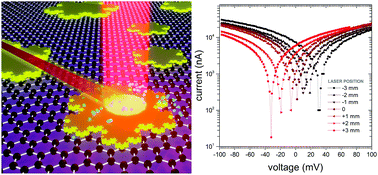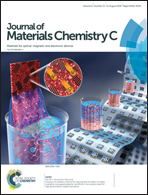IR position-sensitive detectors based on double-junction asymmetric TiO2/MoS2/reduced graphene-oxide sandwiches†
Abstract
Owing to their outstanding electrical performance and tunable optical properties, stacked two dimensional (2D) heterojunctions are among the most promising candidates for the new generation of optoelectronic devices. In the last few years, extensive effort has been made toward utilizing semiconductor 2D materials in optical detectors. The application of semiconductor 2D materials may be extended to advanced functional optical sensors like position-sensitive detectors (PSDs). In this article, we propose a novel configuration for infrared PSDs based on double-junction asymmetric TiO2/MoS2/reduced graphene oxide sandwiches. Chemical vapor deposition of MoS2 nanoflakes on the reduced graphene oxide substrate is investigated in detail. The electrical performance of the TiO2/MoS2/RGO PSD exhibits a strong correlation with the position of localized IR illumination. The PSD benefits from a self-powering facility and displays high sensitivity in both the photocurrent response (>5000 nA mm−1) and the photovoltage response (>20 mV mm−1). In addition, the PSD shows exceptional nonlinearity (<1%) as well as a totally positive correlation coefficient (1.000) for IR intensities >4 mW cm−2. The origin of lateral photovoltage in the asymmetric TiO2/MoS2/RGO sandwich is discussed based on the band alignment of the materials. The presented results indicate the considerable potential of the double-junction configurations for employment in the new generation of functional optical detectors.



 Please wait while we load your content...
Please wait while we load your content...